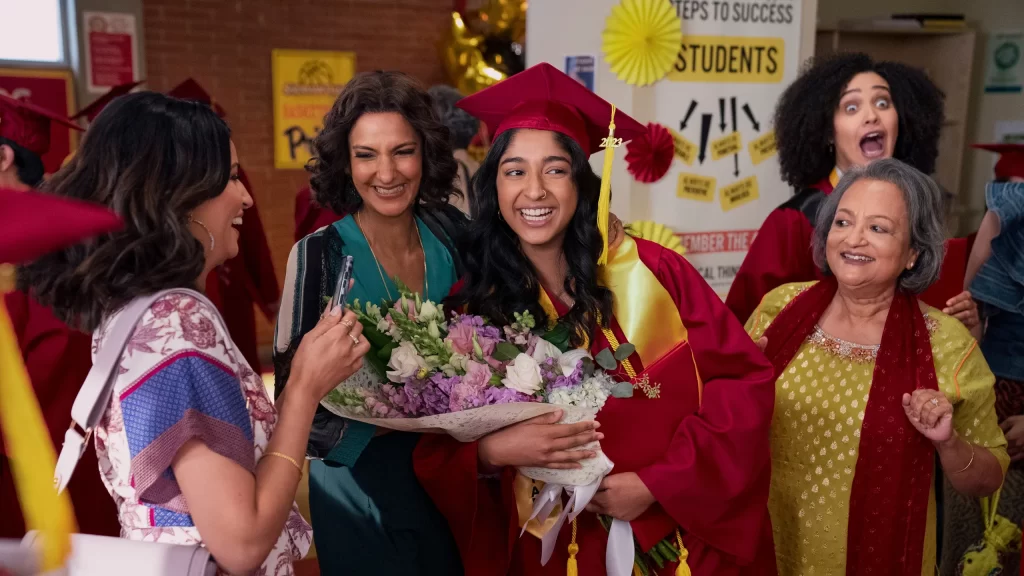Netflix’s original series “Never Have I Ever,” from the creative duo Mindy Kaling and Lang Fisher, follows the life of Devi Vishwakumar, a South Indian adolescent navigating high school in America. As a viewer from a similar cultural background, I found myself relating to and sometimes criticising the show, but I never stopped watching it. As the show recently wrapped up its fourth and final season, it has left some bittersweet flavours behind.
Devi is a South Indian immigrant girl who, despite her flaws and incessant competitive nature, rises to popularity in her high school. As someone with a similar cultural background, Devi’s teenage struggles feel both touching and overbearing. Her characteristic impulsiveness, immaturity, and self-absorption absolve her from the cliche of an idealistic protagonist who eventually faces consequences. Her assertive personality and inability to empathise with her peers often make her apologies appear forced and egoistic, revealing that she is, after all, a teenager, who is not supposed to be perfect. She’s just going through the motions, making mistakes, learning, and transforming, just like any of us.
The plot expertly balances humour, drama, and coming-of-age themes. Devi’s high school experience and quest for scholastic and romantic success fascinate the audience.
Devi’s personality and the multicultural milieu she navigates are reflected in the show’s style and aesthetics.
The cast as a whole, including their diverse cultural backgrounds, enhances the plot. Moreover, the commentaries by John McEnroe and Gigi Hadid, followed by their hilarious reactions, bring in an audience perspective; welcoming a change from the singular-lens format of such shows.
Maitreyi Ramakrishnan, who plays Devi, spoke highly about her character in an interview, drawing from her personal experience as a Tamil Canadian and referring to Devi as “a hot mess”.
While I agree that Maitreyi has been phenomenal in her role of Devi, the characters of her close friends Ben, Paxton, Eleanor, and Fabiola are equally nuanced, as are Devi’s family members.
“Never Have I Ever” also relies heavily on the theme of family dynamics, which is an integral part of South Asian upbringing. Devi’s relationship with her mother, Nalini, goes from one of helicopter parenting to one of understanding and support. Nalini’s character develops as she breaks out of her shell and loosens her control over Devi and herself, while a sudden shift in grandmother Nirmala leaves us awestruck. Her cousin Kamala has always been one of my favourite characters from the drama because she perfectly represents the millennial older sister who, in most desi households, faces both sides of the coin in her struggle for autonomy and setting the pace for her younger siblings.
The show’s co-creator, Mindy Kaling, has commented about why she created “Never Have I Ever” in most of her interviews: the need for an Indian-American female protagonist in pop culture.
Devi’s story shows Kaling’s dedication to sharing diverse stories and representing some dormant cultural viewpoints non-stereotypically.
“Never Have I Ever” bears witness that fictional characters do not set standards, but rather reflect unencumbered attributes. Teen shows on Netflix used to typically represent a utopia that Kaling seems to have intercepted and broken out of, by addressing identity, relationships, and diversity in a way we never thought we needed.
